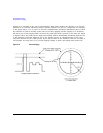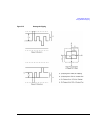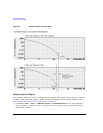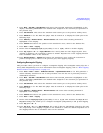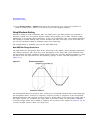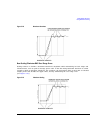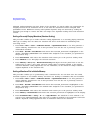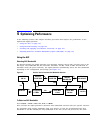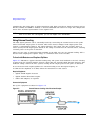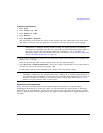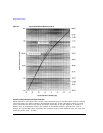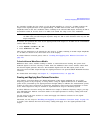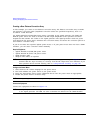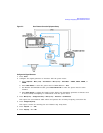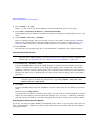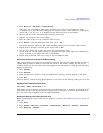
120 Chapter 4
Optimizing Performance
Using External Leveling
sampling the fast rising edges of pulsed waveforms with high crest factors found in formats such as
802.11b, CDMA, and OFDM. A limited, or narrow bandwidth will result in a longer ALC sample time
and a more accurate representation of the signal’s level.
NOTE Do not use the 10 kHz ALC bandwidth for any I/Q modulated signal, as the ALC integration
time is too short. For CW signals, you can use higher ALC bandwidths.
Using External Leveling
The PSG signal generator can be externally leveled by connecting an external sensor at the point
where leveled RF output power is desired. This sensor detects changes in RF output power and
returns a compensating voltage to the signal generator’s ALC input. The ALC circuitry raises or
lowers (levels) the RF output power based on the voltage received from the external sensor, ensuring
constant power at the point of detection.
There are two types of external leveling available on the PSG. You can use external leveling with a
detector and coupler/power splitter setup, or a millimeter-wave source module.
To Level with Detectors and Couplers/Splitters
Figure 4-2 illustrates a typical external leveling setup. The power level feedback to the ALC circuitry
is taken from the external negative detector, rather than the internal signal generator detector. This
feedback voltage controls the ALC system, leveling the RF output power at the point of detection.
To use detectors and couplers/splitters for external leveling at an RF output frequency of
10 GHz and an amplitude of 0 dBm, follow the instructions in this section.
Required Equipment
• Agilent 8474E negative detector
• Agilent 87301D directional coupler
• cables and adapters, as required
Connect the Equipment
Set up the equipment as shown in Figure 4-2.
Figure 4-2 External Detector Leveling with a Directional Coupler



